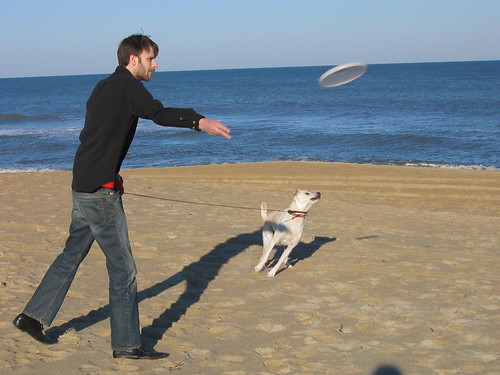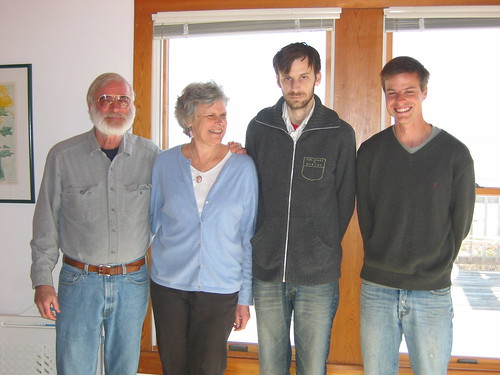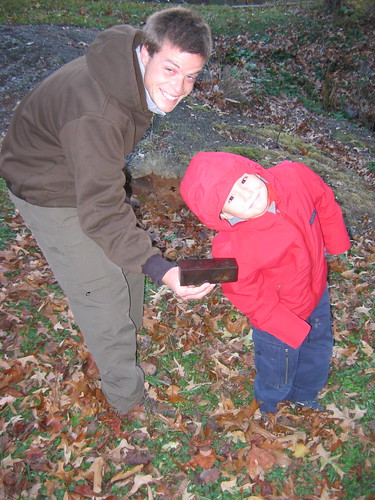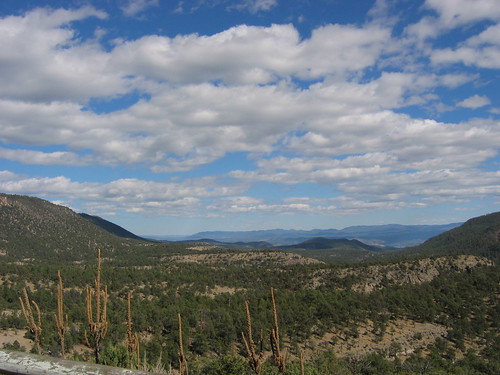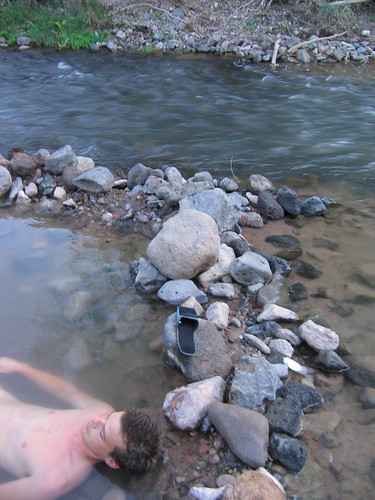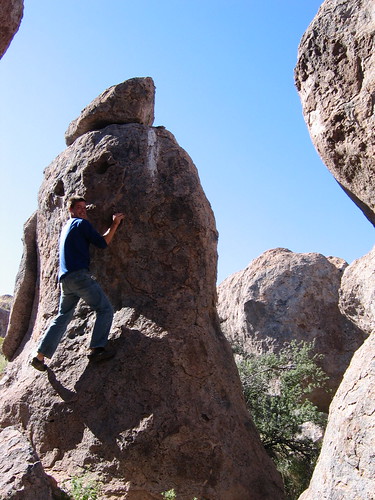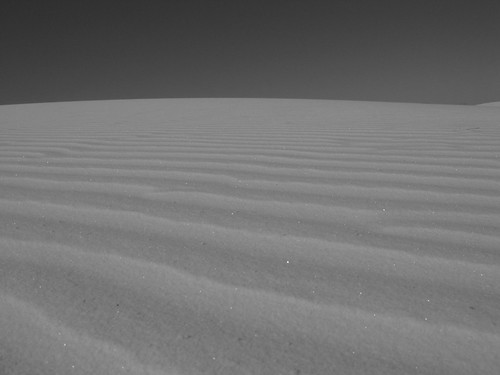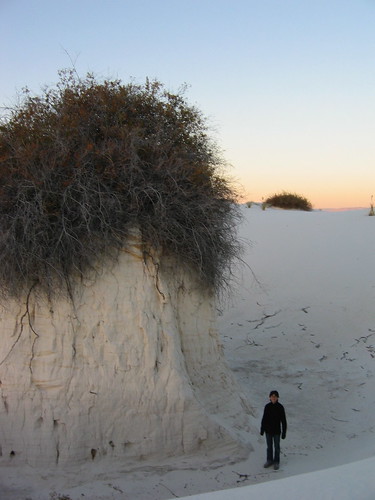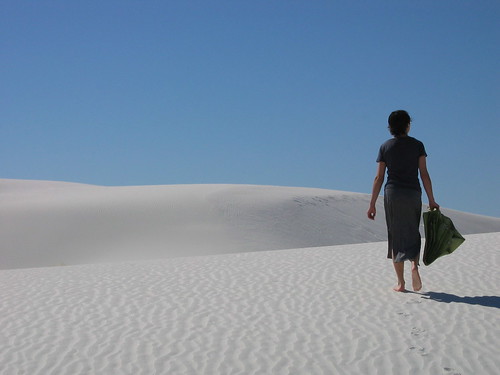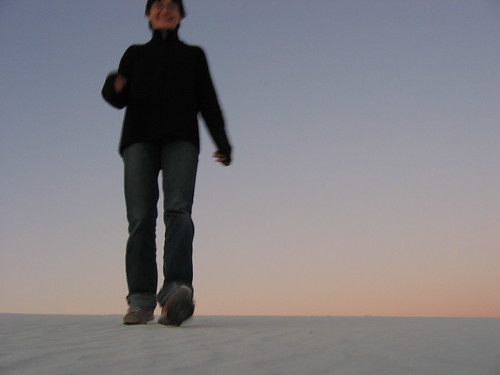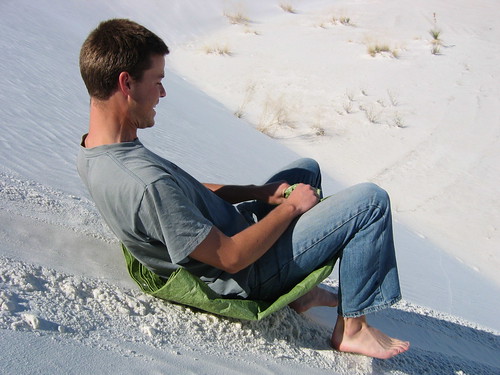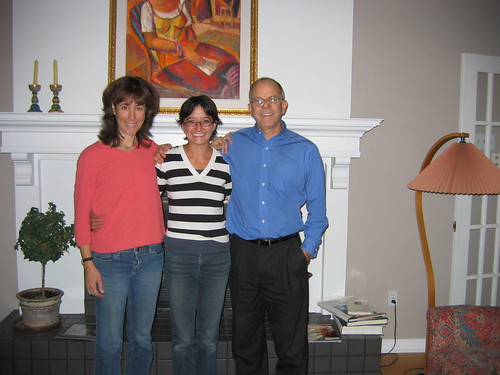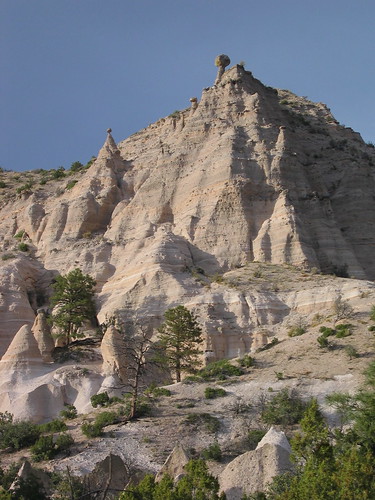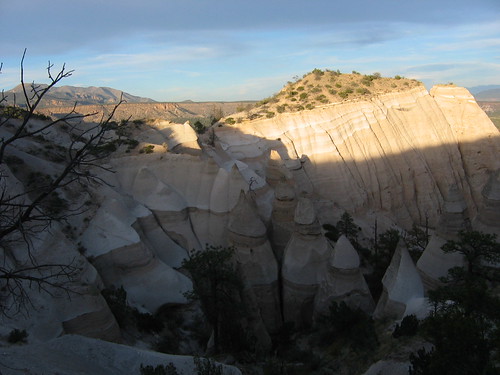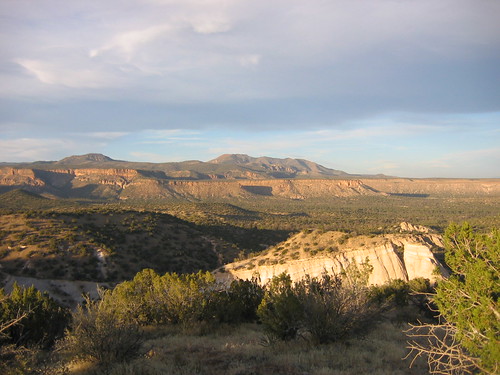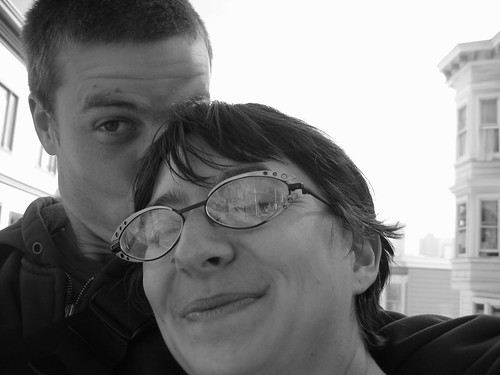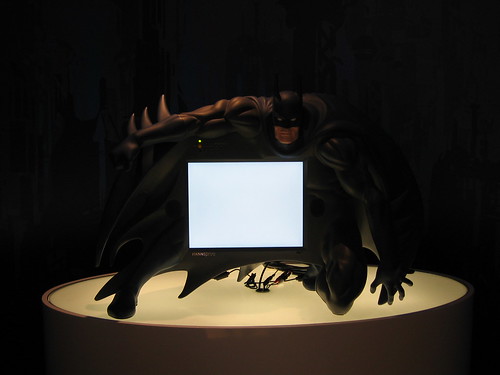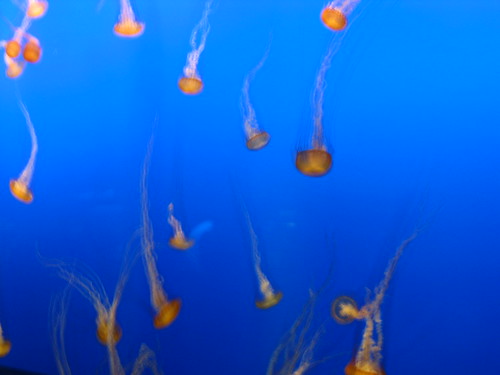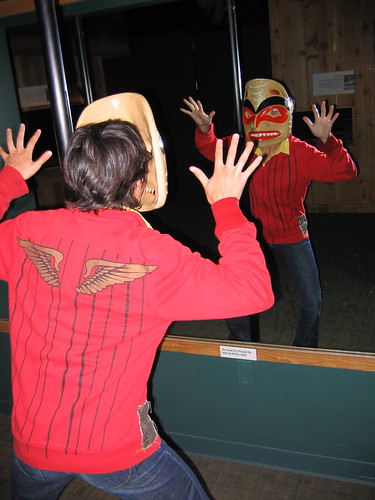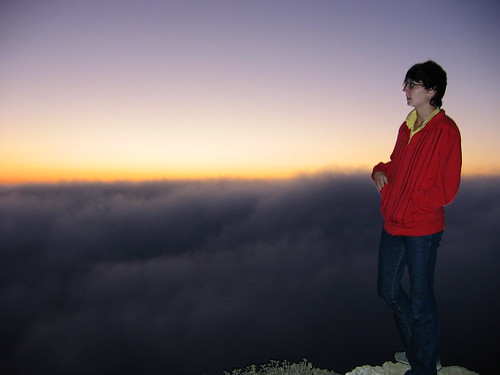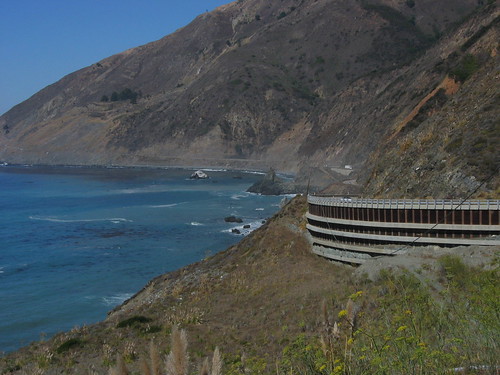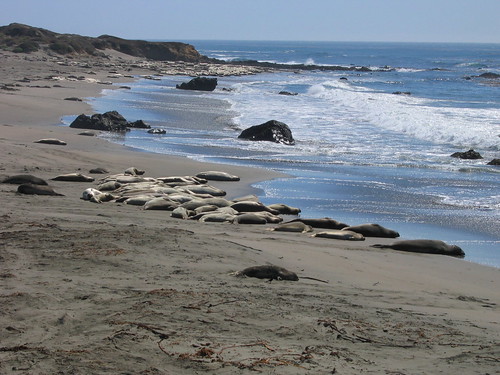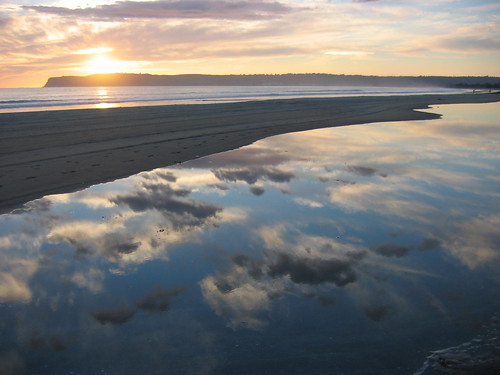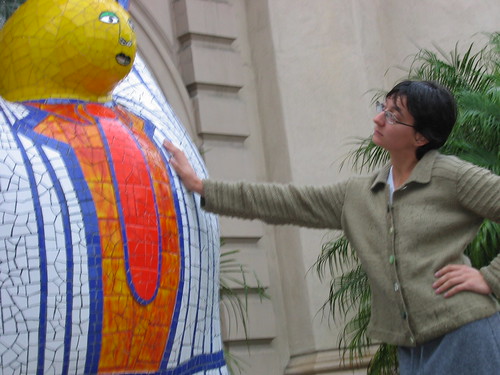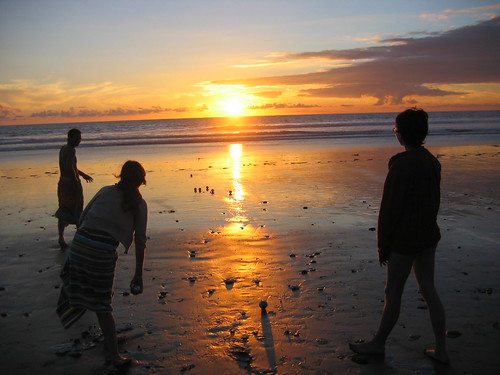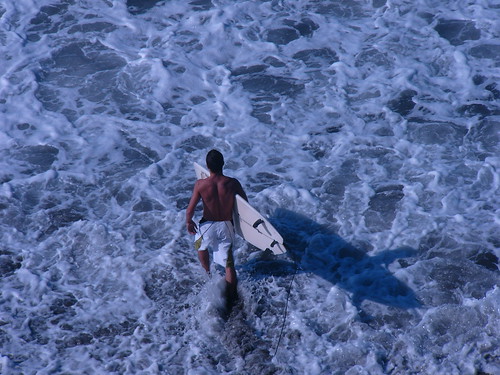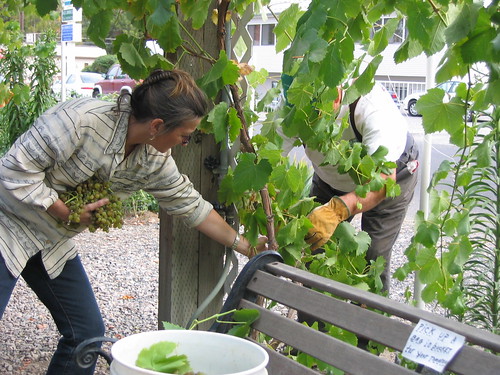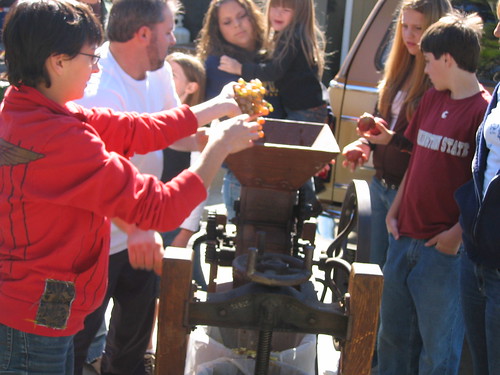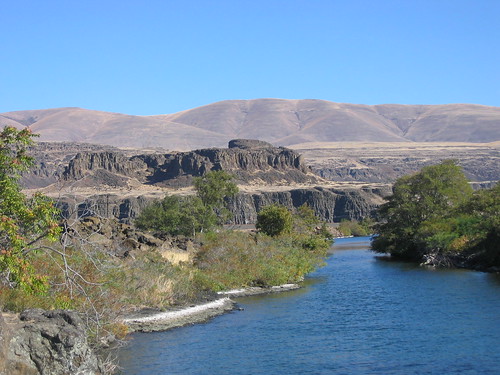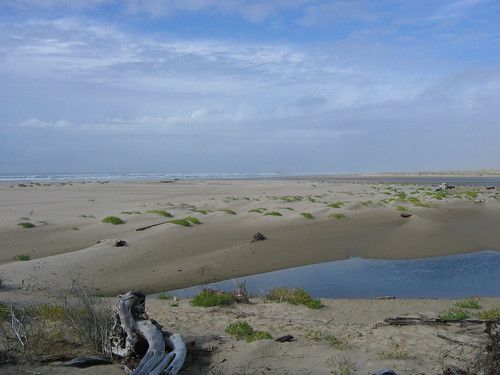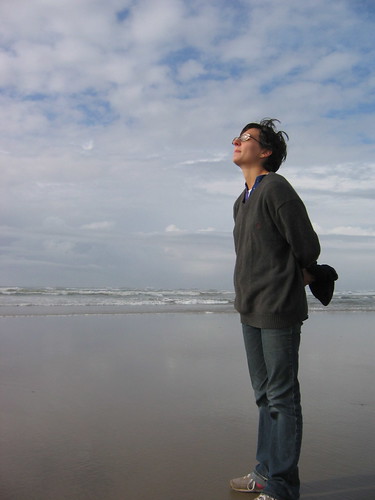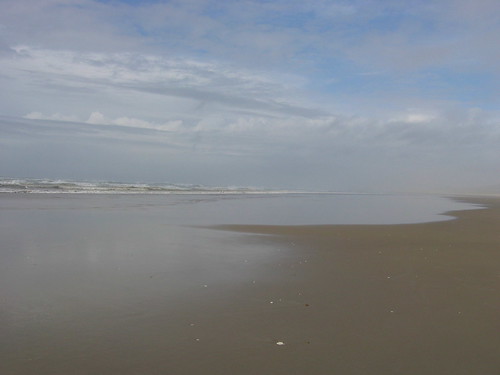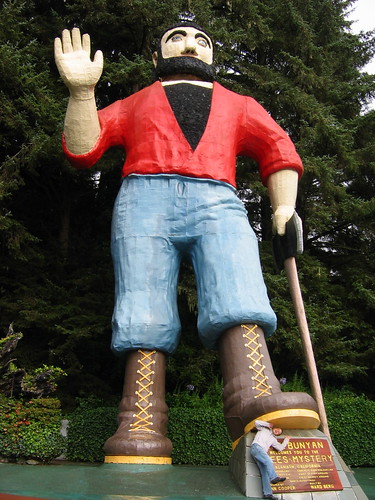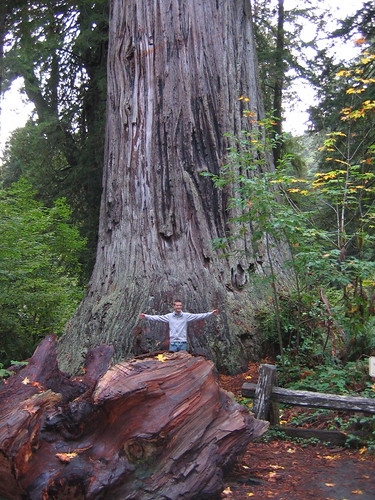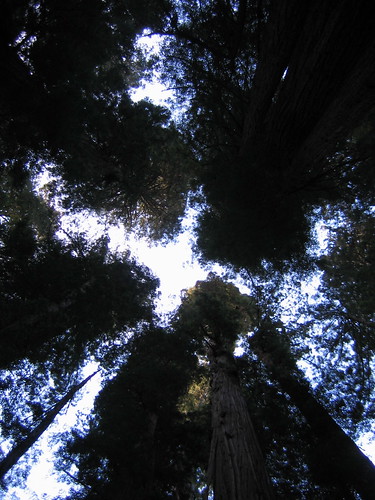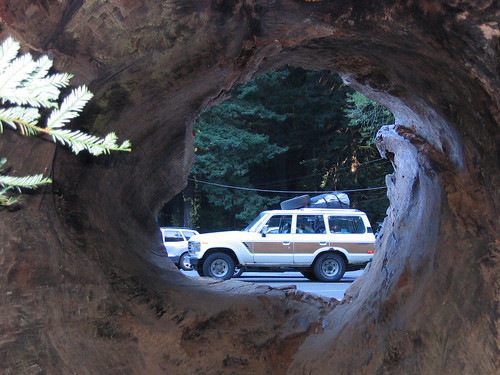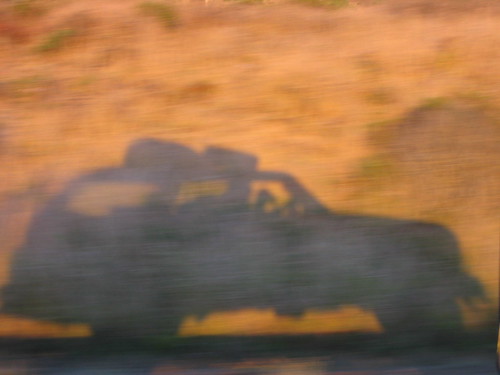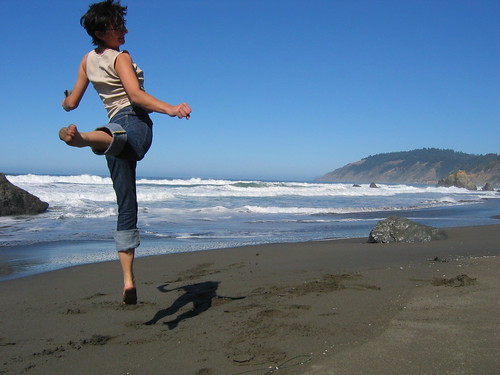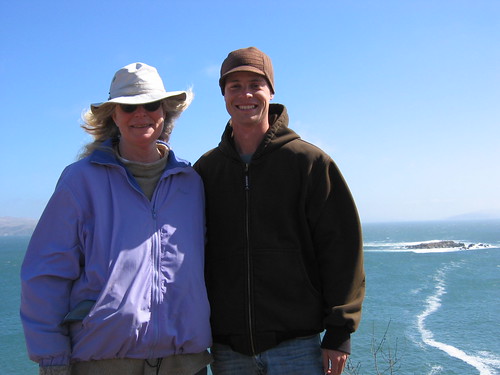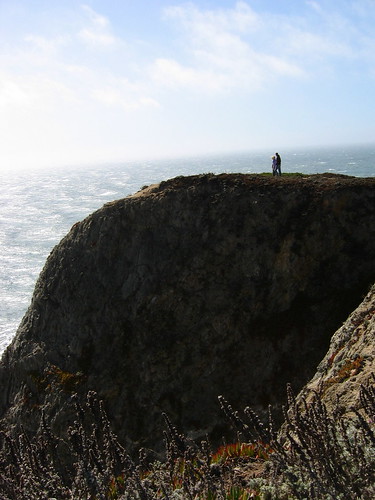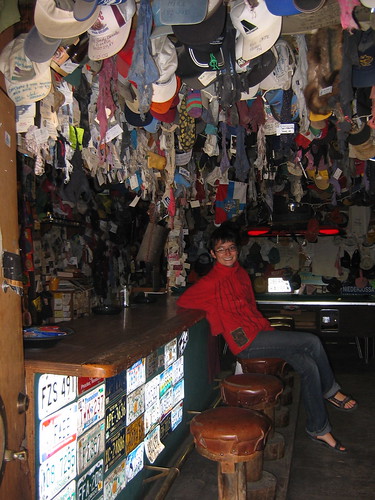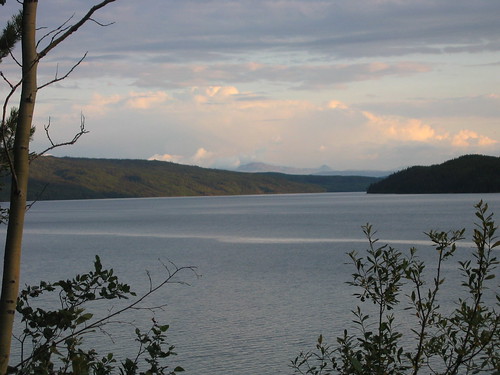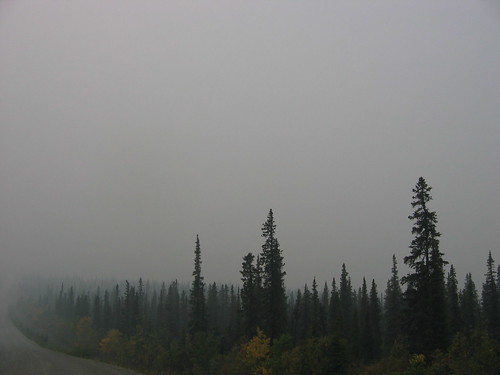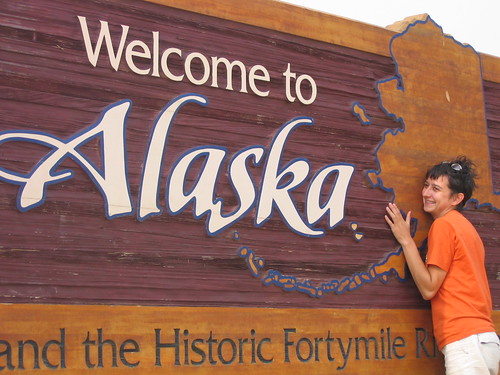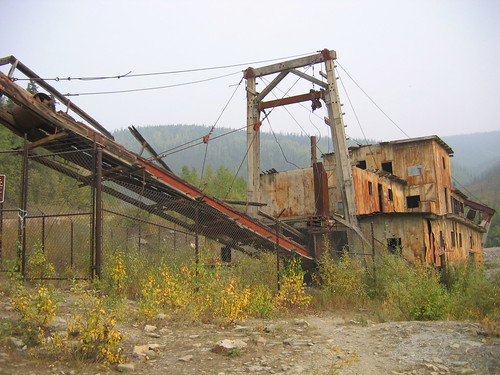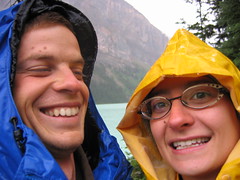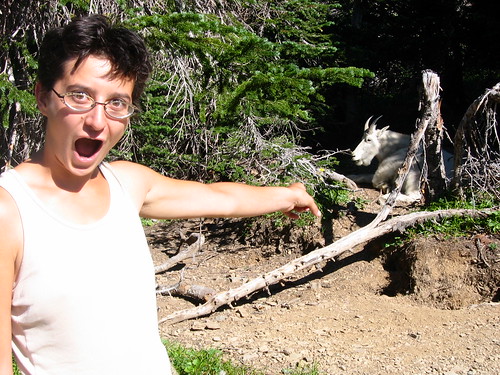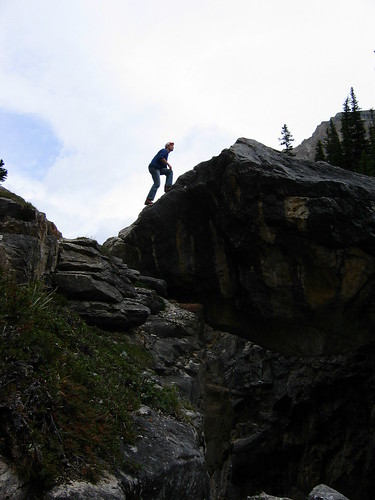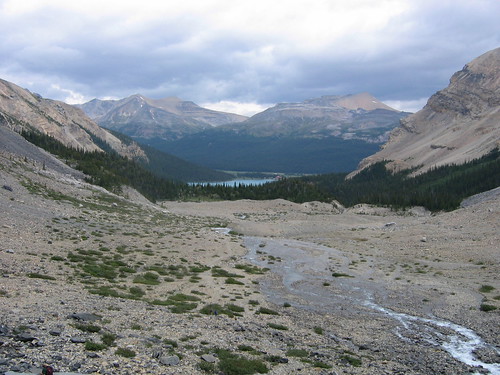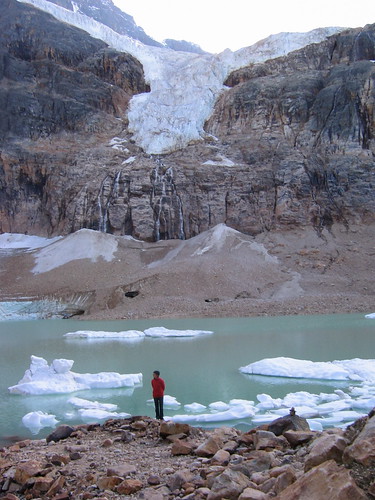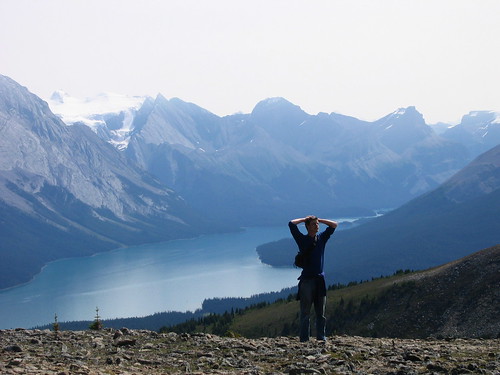Those of you who know me well will not be surprised to learn that I left my laptop on a counter in a Kinko's in Salem, OR. Happily, FedEx and Kinko's are now one, so they are mailing the cursed thing to my brother in San Diego, where we plan to arrive a week or so from now. Until then, no photos. Which is a crying shame, because we have some good ones from the Oregon coast, including sundry sequois sempervirens (the coastal redwood behemoths), as well as northern California. Sans photographs, here is a picture in words of our most recent adventures:
We left Salem and headed for Albany where my great-grandmother's farm is (though it now belongs to one of my father's cousins). My father and his various siblings and cousins more or less grew up on the farm, spending every summer of their young and adolescent lives there. I had also been there many times when Nanny was still alive, and recall that it's most prominent feature was the spider-ravaged fruit cellar where you were locked if you misbehaved. My father bought the farm from Nanny before he died and intended, I think, to live out his days there. Being as such the place where I could possibly have spent my own young and adolescent summers (and winters and the rest of many years), it's an interesting excercise in the many worlds theory to return and see what my possible life would have looked like. My grandmother's sister June lives down the gravel way, and we camped on her lawn (the gang was out elk hunting, so we had the place to ourselves) and listned to the owls cry dusk and watched the sun set over the stalwart row of redwoods that break the wind off the fields. All in all, a possible childhood to relish.
We decamped from Albany on Sunday and aimed for the coast of Oregon, 60 miles to the west. You may have heard it from other, more reliable, sources but the Oregon coast is the most beautiful in America. Foresight left the vast majority of it in state hands, and the rest--due to strict zoning and building laws--is hardly developed (a far cry from the misery of the Atlantic coastline). It's misty, foggy, craggy, and fearsome. We stopped for a hike out to the Oregon Dunes, which reach heights of up to 400 feet and feature the complex and delicate growth of hardly coastal grasses. We ran from "sneaker waves" -- one in every few hundred that race past the tide line and steal inattentive creatures out to sea. Just inland of the dunes is a strip of subtropical rainforest, in which John spotted lots of slithery things. The hike was beautiful, emerging as you do from one of the rarest microclimates in the world--where the thick canopy of the forest chokes out the sun--into the bright, open world of sprawling sand beasts and gnarly ocean.
We started the working week off with our arrival in the redwoods. The story of the preservation of the redwoods forests is unique, and easily discovered by a trip to see the giants, which we encourage. Loads of very good writers have described being among the redwoods and feeling a religiousity descend on them, and indeed being among them was like being a cathedral. But we felt that the most apt approximation of their character and stature was captured by Peter Jackson in the Lord of the Rings movie (I'm not a Tolkein geek, so I don't remember the names of the giant tree guys who come to the rescue of the wizard, but you know who I mean). Some of the trees are more than a thousand years old (some almost two thousand), and are the tallest living things on earth (taller than the Statue of Liberty, though not living is a good marker of the height of these behemoths). The oldest came to exist around the time Christ was born, before Shakespere, before Columbus, before Napoleon, and long before us, and they have stood through earthquake, flood, fire, and gale. Walking through the forest and looking up, it feels like the sky has receded many miles higher than it was the last time you checked. They are beings that extinguish human egotism and embellish the goodly human insticts--like reverence and wonder--at the same time. We set up our camp just next to a stream in Elk Prarie State Park, back in a dark, damp corner of the forest that never sees enough sunlight to dry out.
The next day we thought we'd take a four-mile hike through the forest to the ocean and the "gold bluffs" that sheer up out of the water. At the beach we saw a herd of elk, a magnificent male among them, his antlers in relief against the ocean, feeding on the coastal grasses. Our hike then turned epic as we opted for a longer route home, and fourteen miles later we were back at camp, tired and sore and sorry indeed, but ready to enjoy a fire and a jug of good Oregon beer we picked up in Hood River at the Horsefeathers Brewhouse.
We slept through the dampness only to find that it had gotten to Brinkman in a bad way. When we piled in to leave, we found that his poor engine was flooding every time we turned the key. We spent an hour or more, with input from various passersby, tinkering and trying to figure out what was wrong. Just as we were about to give up and call AAA, John gave him an abusive crank and he sparked to life. We surmise that the condensation from the damp forest (and no sunlight to evaporate the moisture) just soaked the engine through. In any case, we were off.
We followed the coast down to California passing through more redwood territory until we came to Highway 1, the infamous deathtrap that people with sportscars like to call "scenic." In fact it's both scenic and dastardly, with tight endless switchbacks tailored more to German engineering than Japanese. Brinkman--a brutish rather than a fancy creature--set himself to the challenge heroically and didn't once carry us over a cliff. The first 25 miles of the road takes you over the Coastal Range to the ocean, and passes through what people have variously described to us as "straight hillbilly country," "Mexican mafia bandejo land, man," and "where they grow all the marijuana." Intensely wooded, with little more than KEEP OUT signs to indicate a human presence, it didn't feel like a place you'd want to contract engine troubles. Perhaps the most forebidding of all were the few broke-down shacks we did see--replete with decaying, moss-covered roofs and collapsing foundations--in which people were actually living. Eventually, though, the road shoots you straight out of Deliverance hell and onto the ocean cliffs, which it follows on a knife edge down to San Francisco, 150 miles to the south.
We camped at the first place we came to, the cheapest state beach in California (at $10 a night), according to a fellow we judged to be knowledgeable since he lived in his van. It was perhaps also the friendliest. We parked about 25 feet from the edge of a cliff, looking out over uncountable billions of gallons of ocean, and set up our tent as close as we could to the chasm (that turned out to be about four feet). Within minutes, an older couple from San Jose had befriended me (John was fetching firewood). They were two months on the road and sweet as pie. When John didn't return soon, I left them and went to fetch him and his load. Enroute back, we were flagged down by the man who lived in his van, who needed a jump start because his car battery was an egg (to hear him tell it, but it seems more likely to us that it kept dying because he was running a heater, radio, and DVD player off of it, and hadn't moved the car in a few days). He offered us a beer for the help ("Don't run off now"), and we sat with him and his dog and watched the stars light up, and then the moon set, and then Mars. "Dusty Miles" is how he introduced himself, and his dog was Roscoe Resin. He moved between the coast and the desert, selling jewelry he had taught himself to make, and seemed pleased with his current state of affairs. He told us he used to "dream about doing bad things to people who'd hurt me and shit, but now I dream about jewelry, man." And concluded, "This stuff heals your soul." Despite the fact (or perhaps because of it?) that he'd clearly spent a lifetime smoking pot, he was intesely friendly and we greatly enjoyed his company. By the time we got back to the camp, the old folks from San Jose had worked themselves into a worry over where we'd dissapeared to for so long ("Jumping Joseph and Mary, you kids nearly drove us to drink!"). We visited for a long time the next morning, and offered them a can of our salsa to smooth things out.
After playing on the beach for a half hour, only to be disturbed away by the corpse of a dead sea lion, we headed back to Rt. 1 for a few hours drive to Bodega Bay to visit John's Aunt Pat. And after a few pit stops to let our churning stomachs settle and take in the equally amazing scenery, we made it to Pat's bungalow on the beech where we now rest and relax. We have enjoyed lots of talk of animals and the universe's harmony that we are indeed feeling everyday and John is relishing the opportunity to really get to know more of his family . You might notice that this is the first that we have seen of John's family and that has nothing to do with not loving those that are out there but rather from the fact that he comes from a family quite the opposite as Hanna. John has one aunt and one uncle, a close nit immediate family and no cousins or grandparents. Inspired by Hanna's love and closeness with her family has inspired John to seek out more fully those of the clan that are still around. We are enjoying day two of our visit to Bodega Bay and will head on Saturday for the Bay Area and then onto points south. Pictures will follow when technology to do so arrives.
